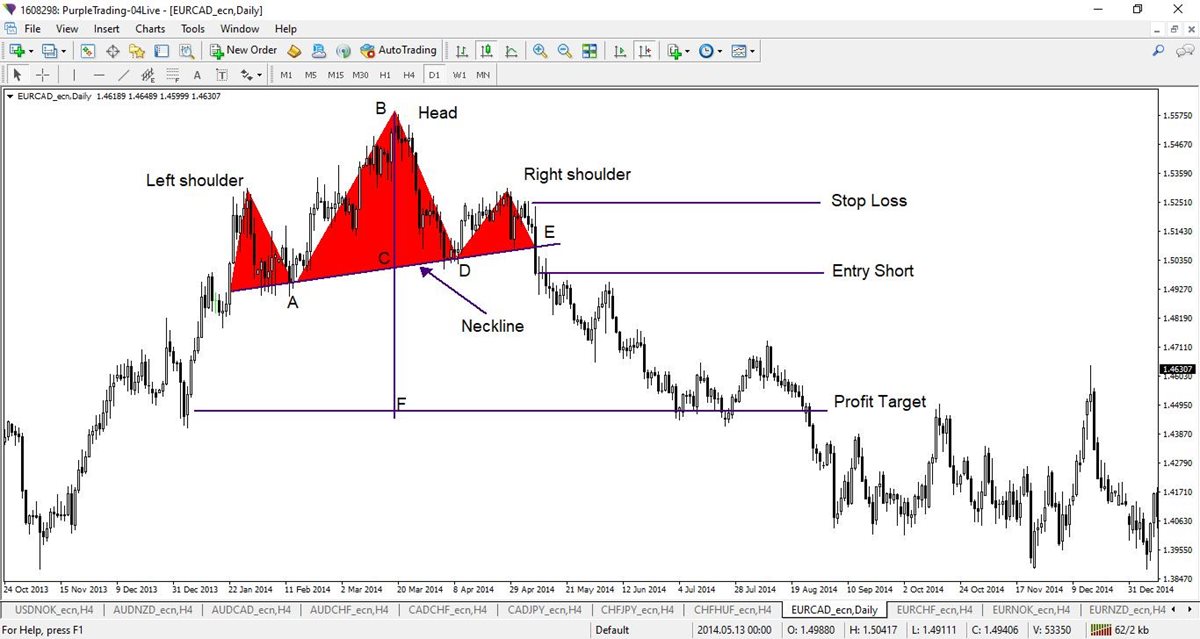What are the most common reversal chart patterns?
The most common reversal price patterns every trader should know are here: the Head and Shoulders, the Inverse Head and Shoulders, the Double Top, and the Double Bottom.
Head and Shoulders pattern
This pattern is one of the most reliable indicators of a trend reversal. The pattern occurs after a previous upward trend and when completed, the market often turns downwards. Sometimes the pattern is called S-H-S (shoulder-head-shoulder).
This pattern is formed by three peaks, the middle of which is the highest one. The middle peak of the pattern is the so-called head, and the two other peaks are the shoulders. In addition, the pattern is formed by a neckline line that connects the lower swings of the pattern (points A and D in Figure 1).
In Figure 1 we have an example of this pattern, from which everything will be clearer.

The Head and Shoulders pattern (S-H-S) in the EURCAD currency pair
Chart breakdown
A pattern arises so that after the previous uptrend the left shoulder is first created when the price creates a new high and then drops to the point where it previously rose from (point A). In the second phase, the price rises and exceeds the previous peak, resulting in a higher high (point B), and then the price again falls to the central line, the so-called neckline (point D). Then the price rises again, but this time it creates only a lower high, so the uptrend structure is disrupted. The pattern is confirmed when the price crosses the neckline from top to down (see point E).
How to trade Head and Shoulders pattern
The pattern is traded by taking the short trade (speculation on price decrease) when the neckline is broken down. To avoid a false break during the day, it is recommended to wait for the daily candlestick to close below the neckline.
The short entry can be either on the price level where the daily candlestick, that broke the neckline, closed. Or the second option is to wait for the price to retest the neckline after its breaking and speculate short on the price drop after that. The second option offers a better Risk Reward Ratio while also confirming the validity of the break.
The stop loss can be either above the right shoulder level or above the last swing before the neckline break through (this option is shown in Figure 1).
To set a target price we have two possibilities:
The first option is to take the target price on the level where the first support level is. The second and more aggressive option is that the target price should be at the same distance as it is the distance from the top of the formation to the neckline. In our case, therefore, the length of the move BC should be equal to the length of the move CF.
Few important insights regarding the Head and Shoulders pattern:
- For the pattern to be defined as the Head and Shoulders, it must be preceded by a clear uptrend.
- No shoulder shall be higher than the top of the head.
- The neckline must be either horizontal or ascending. For this formation, the neckline must never be descending. If the neckline is falling it is a signal of the weakness of this pattern.
- The tops of the shoulders should be approximately on the same horizontal level.
This pattern occurs in all time frames. We recommend watching it, especially on a daily or weekly chart. The analysis may be supplemented, for example, by moving averages.